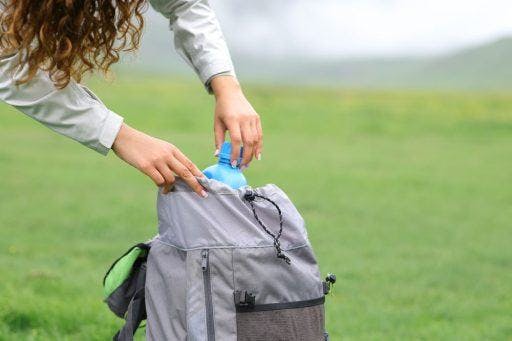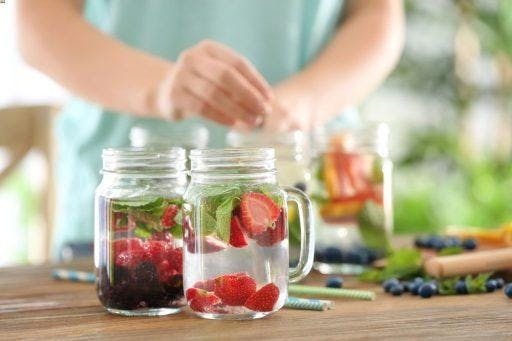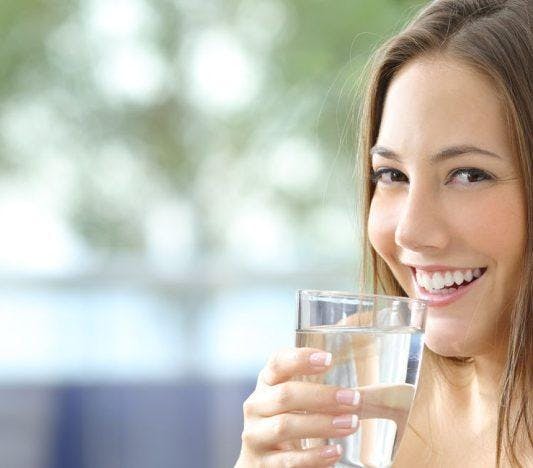How much water do you drink in a day? If you’re not guzzling enough, you might be missing out on the many benefits of drinking water that extend to your teeth. Yes, staying hydrated can do wonders for your pearly whites! Here, discover why H20 might be the unsung hero for a brighter smile.
The Benefits of Drinking Water for Your Oral Health

The American Dental Association (ADA) confirms that drinking enough water can help prevent cavities and improve saliva production. But that’s not all! Loading up on H2O can lead to:
1. Stronger teeth
Drinking fluoridated water is a game-changer for boosting your teeth’s enamel strength. According to research from Community Dentistry and Oral Epidemiology, children in areas without access to fluoridated water are more susceptible to tooth decay compared to those with consistent fluoridation. So, the more water you drink, the more opportunities for remineralisation, a process that repairs the damage caused by acid on teeth.
2. Cleaner mouth
Juice and soda might taste refreshing, but sipping these sugary drinks leaves unwanted sugar in your mouth. One of the benefits of drinking water is maintaining a cleaner, fresher mouth. The swishing action washes away any leftover food particles and neutralises cavity-causing acids from bacteria.
3. Fresher breath

Don’t let dehydration leave your mouth feeling drier than the Sahara. According to a study from the International Dental Journal, a dry mouth is one of the top causes of halitosis. So, quench that thirst by increasing your water intake. And on date night, trade your pack of mints for a refillable water bottle and gain the confidence you need from a well-hydrated mouth.
4. Brighter teeth
After a heavy meal of stain-causing foods and drinks, skip the coffee or tea and ask for a glass of cool, refreshing water. Of course, brushing your teeth is the best way to keep them clean. But if toothbrushing isn’t an option, give your pearly whites a quick rinse and swish instead. Washing away acids on your teeth will keep discolouration at bay and allow you to smile your brightest!
5. Healthier gums
Beyond your mouth and teeth, the benefits of drinking water can reach your gums. Research from Water reported that people who drank more H20 have a lower risk of periodontal disease. So, drink up to keep your gums healthy and hydrated!
How Much Water Should You Drink?
Make a conscious effort to stay hydrated throughout the day. Don’t wait until you feel thirsty or your mouth gets dry. The renowned “8×8 rule” recommends drinking eight ounces (one cup) eight times a day. However, evidence supporting this is lacking. Meanwhile, the Harvard Health Medical School advises men to target about 15.5 cups and women to aim for 11.5 cups daily.
The truth is that the ideal water intake varies – no one size fits all. Specific needs can still change depending on various factors, including age, activity levels, outside temperatures, or medical conditions. It’s best to consult your doctor to ensure your intake meets your requirements.
How to Drink More Water in a Day

Now that you’re all set and ready to get sipping, turn to these tips to make drinking water less of a chore.
- Add flavour to your water. Elevate your water game by infusing it with fruits or vegetables. Add cucumber slices to your water pitcher and refrigerate it for a refreshing drink!
- Develop a water-drinking routine. After every meal, wash everything down with a tall glass of water to rinse leftover food particles and stain-causing acids from your teeth.
- Carry a water jug when heading out. Before leaving the house, bring a refillable bottle or flask to stay hydrated wherever your day takes you.
- Consider a water-drinking app. Download a hydration tracker to help you set and monitor your water intake goals. Or, set an alarm on your phone to remind you it’s drink o’clock.
- Dilute sugary drinks with water or ice. If you’re not ready to give up juices or sodas yet, take steps to minimise the amount of sugar in them. Order a side of ice to dilute them for a refreshing drink sans the teeth-staining guilt.
To help you drink more water, adjust your lifestyle tailor-made to your needs. For instance, if you’re exploring options to fix your misaligned teeth, consider orthodontic solutions that won’t disrupt your water-drinking routine. While there are no food or drinking restrictions with clear aligner treatments, it’s recommended to drink cold or warm water only to prevent dry mouth and ensure saliva production when wearing your clear aligners.
ClearCorrect dental aligners offer a comfortable approach to treatment and the freedom to drink as much and as often at ease. Also, their superior stain-resistant properties make these orthodontic aligners more hygienic and durable than other leading brands.
From helping maintain blood pressure to regulating body temperature, the benefits of drinking water are endless. And when it comes to your oral health, cleaner teeth are just the tip of the iceberg. Develop the habit of drinking water frequently throughout the day for a cool burst of confidence from a healthy smile. Cheers!
References:
4 Reasons Water Is the Best Beverage for Your Teeth. (n.d.). the American Dental Association.
Harvard Health. (2023, May 22). How much water should you drink?
Kim, Y. (2021). Analysis of the Effect of Daily Water Intake on Oral Health: Result from Seven Waves of a Population-Based Panel Study. Water, 13(19), 2716.
Lau, P., Ibrahim, S., Hussain, A., Hu, S. K., Jin, S. J., Huang, M. B., Khng, M., & Darby, I. (2021). “Say ahhh”: Experience and views on halitosis management in the general public in Victoria, Australia. International Dental Journal, 71(4), 316–320.
McLaren, L., Patterson, S., Thawer, S., Faris, P., McNeil, D., Potestio, M. L., & Shwart, L. (2016). Measuring the short‐term impact of fluoridation cessation on dental caries in Grade 2 children using tooth surface indices. Community Dentistry and Oral Epidemiology, 44(3), 274–282.



